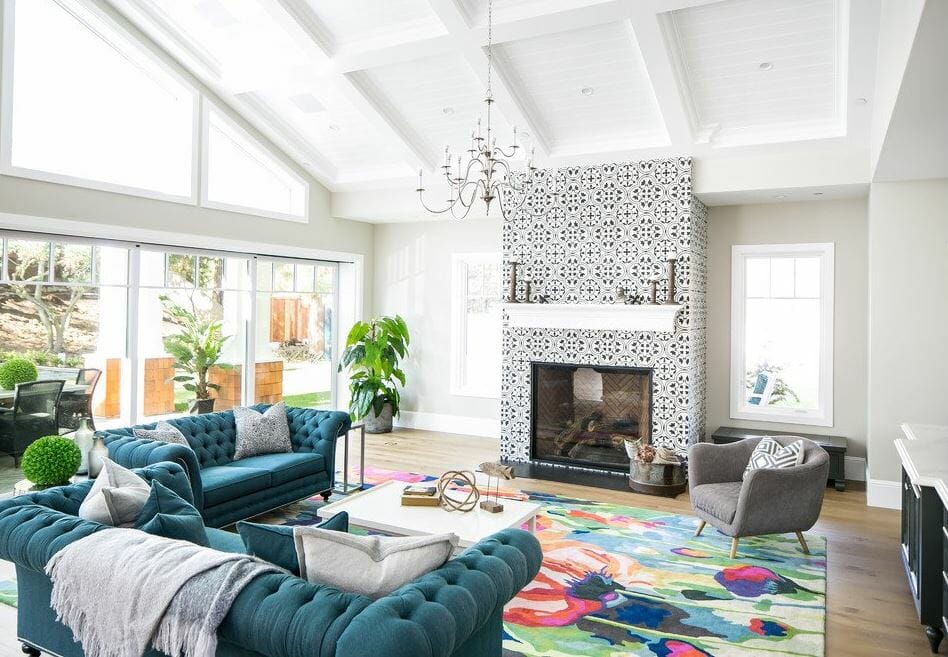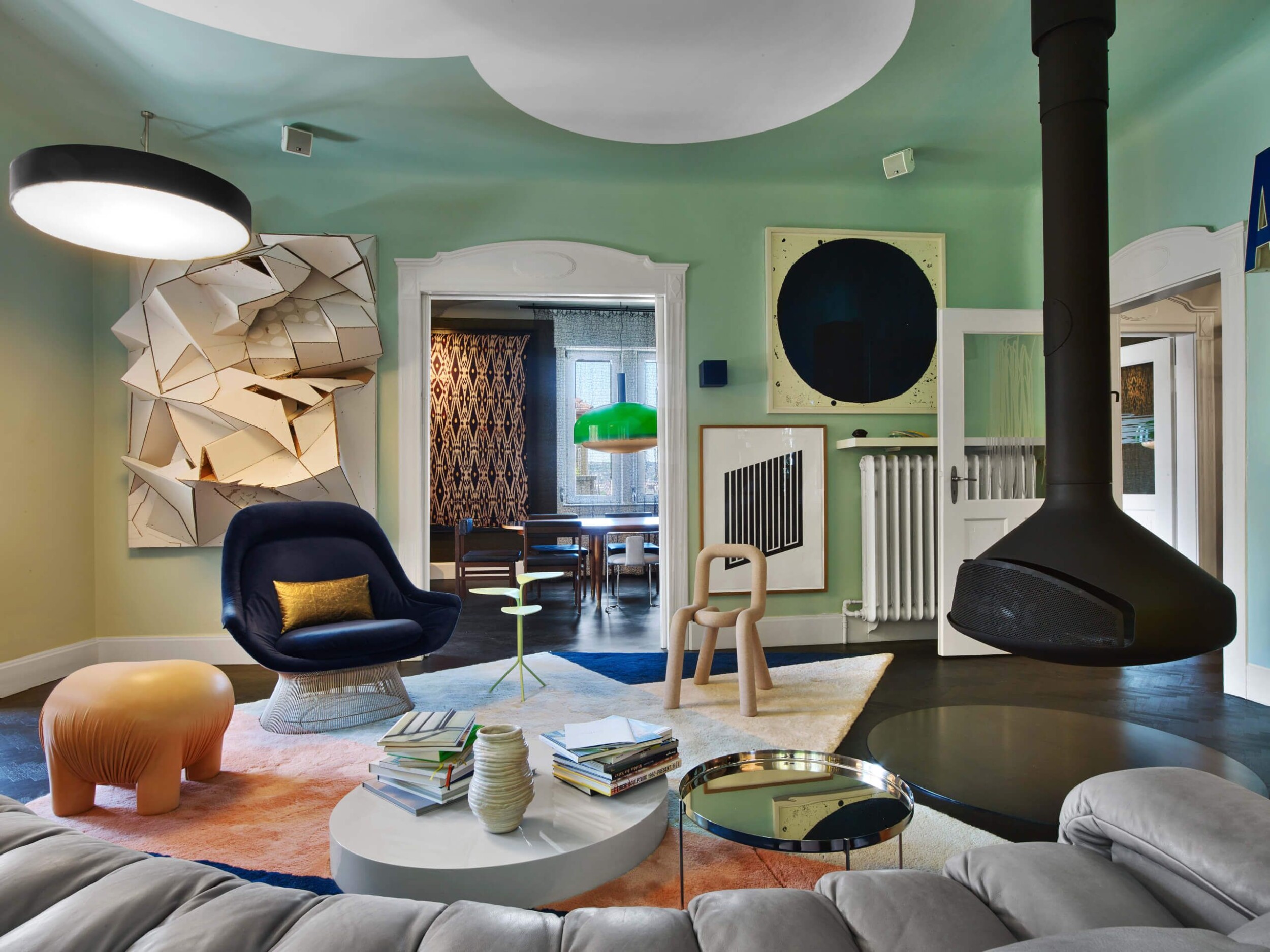
Types Of Interior Design, As you may know, the interior design industry is a booming one with many different types of designers working in it. There are many different styles and types of designers as well. In this article, we will cover all the types of interior design styles available to you today and what they mean, so that if you’re looking for someone to help with your next project or just want some ideas on how to go about decorating your own home, then read on!
Minimalist
Minimalist interior design is all about reducing the amount of clutter and furniture in your home. This may seem like a strange concept to some people, but it’s actually quite common for minimalist designs because they put more emphasis on using space wisely.
Minimalist design is often associated with modern and contemporary styles because both of these styles tend to have less decoration than other styles. Although this may be true, there are also plenty of people who have added minimalist elements into traditional or even eclectic homes!
Types Of Styles In Interior Design
A style is a way of designing a home. There are many different types of styles, and it’s up to you to choose the style that suits your taste. You can mix and match styles too.
- Contemporary: This style uses clean lines and geometric shapes, with minimal furnishings and decorative accents. It’s also known for its use of bright colors, bold patterns and materials like glass or metal in the design of furniture pieces like coffee tables or lamps.
- Traditional: Traditionally inspired architecture typically features ornate details such as crown molding or curved archways over doors; woodwork may also be present in this type of interior design scheme—from flooring to cabinetry—along with more neutral furnishings such as upholstery fabrics rather than fabric patterns (or no pattern at all) for rugs on hardwood floors instead

What Are The 6 Types Of Interior Designers
Interior design is a huge field, and there are many types of interior designers. Here’s a quick run-down of the most common design jobs:
- Interior designer: The main job of an interior designer is to create plans for the layout and decorating of homes, offices and other spaces. They work with clients to come up with an idea for their space, then they create drawings that show how the space will look when it’s finished. They also help their clients select furniture, fabrics and other materials that coordinate with each other so they can create a unified look throughout the room or house.
- Architect: Architects design buildings from scratch—they come up with floor plans, choose materials like brick or stone for exterior walls, decide what shape windows should be in order to make them functional (i.e., let in light without letting too much cold air in), etc. A good architect will also be able to suggest ways to save money on construction costs by using cheaper materials than originally planned (like using basic wooden floors instead of laminate). If you’re going through an architect specifically because you need custom features built into your home (a wine cellar under the stairs), make sure they’re qualified before signing any contracts!
- Designer/decorator/stager/home stager: These four titles mean almost exactly the same thing: someone who specializes in designing interiors for residential properties (like houses) rather than commercial spaces like stores or offices (that’s where interior designers usually work). If you’ve ever seen something called “designer staging” this means someone has been hired specifically to make over one home at great cost before selling it off; this type stuff doesn’t happen very often but if done right can really boost sales prices significantly!
What Are The Types Of Interior Design
- Interior Design
- Commercial Interior Design
- Kitchen Interior Design
- Contemporary Interior Design
- Traditional/Classic Interior Design
What Are The Types Of Interior Design Styles
- Contemporary: A design style that looks to the future and uses high-tech materials.
- Modern: A design style that borrows from other styles but has its own unique flair.
- Transitional: A blend between contemporary and traditional, this style is perfect for a home in transition. This is also a great option if you’re looking to update your space without going full-on modern or traditional.
- Scandinavian: This style incorporates elements of nature into its designs, making it feel light and airy with natural colors on the walls like white or blue, as well as incorporating plants into each room. This type of interior design can be seen most often in Nordic countries like Norway (where there’s lots of snow!), but you’ll see it pop up here and there across America too! Just look out for muted tones instead of bright ones since those aren’t as common outside Scandinavia…they’d look weird against our warm weather!

Types Of Commercial Interior Design
Commercial interior design is a broad term that encompasses all of the types of design that are done for commercial spaces. A commercial designer might be working on anything from an office building to an airport terminal, but they’re still doing commercial interiors.
As you can imagine, there is always a need for commercial interior designers. In fact, one of the best parts about getting into this field is knowing that no matter what happens in your life or what other interests you may develop, your skills will always come in handy!
Types Of Kitchen Interior Design
When it comes to interior design, kitchens are the heart of the home. From simple paint jobs to complex appliance changes, kitchen design can be used to make your kitchen look new or completely different. What do you want your kitchen to say about you? Are you ready for a change? The choices are endless when it comes to your own personal style.
Contemporary
Contemporary design is a style that is more modern than traditional. The designs are clean and often use bold colors, patterns, or textures. Modern furniture is often used in contemporary designs, but you don’t have to use this type of furniture if you don’t want to. Some interior designers believe the best way to achieve an effective contemporary look is by combining a few different styles together (such as classic and modern) rather than sticking with one type of design throughout an entire room or house.
Contemporary designs are popular with young people because they’re relatively easy to change over time when your tastes change or as new trends come along. This can make it easier to live in smaller apartments since you won’t have big pieces of furniture that take up a lot of space hanging around forever after they’ve gone out of style!

Modern
Modern design is a style that emerged in the early 1900s and has been popular ever since. It is often associated with clean lines, simple forms and neutral colors. Modern design can be seen in architecture, interior design, furniture and other elements of everyday life.
Modern interiors are usually sparsely decorated with items that have clean lines or geometric shapes. Furniture pieces are often made from metal or plastic to complement modern decorating styles. The main goal of any room designed using this type of décor is to make it functional while maintaining an eye-pleasing appearance at all times
Transitional
Transitional design is a combination of classic and contemporary design elements. It’s a great choice for those who are looking for an elegant, timeless style that won’t be outdated in a few years. The look isn’t overly formal or traditional, but it’s not ultra-modern either—it bridges the gap between these two styles.
Transitional design can be further broken down into transitional modern, which incorporates clean lines, minimalism and simple geometric shapes; as well as transitional traditional, which uses traditional materials such as wood and textiles with clean modern lines (think: dark furniture paired with light walls).
Scandinavian
Scandinavian style is characterized by simplicity and cleanliness. The minimalist design of Scandinavian interiors is achieved through the use of only a few materials and colors, as well as the proportion of space in each room. This approach also emphasizes light, which helps to create a sense of space.
This type of interior design involves using natural materials such as wood and stone instead of synthetic ones like plastic or metal. The materials you choose should complement each other while still feeling cohesive with one another—for example, wooden floors should be paired with wooden furniture pieces or other pieces made from natural materials like leather or cotton fabric.

Traditional/Classic
The traditional/classic style is a blend of modern and traditional styles. This design style incorporates new elements with old ones, resulting in a tasteful and professional look that is both elegant and inviting. Traditional/classic designs are considered the most popular interior design styles as well as the most common, making them great for any homeowner who wants an inviting space without going overboard with too many unique elements.
Traditional/Classic Design vs. Modern Design
The same can’t be said for all types of interior design, however! In fact, there’s another type of interior design that might be better suited to your needs—modern design!
Find the type that suits your taste.
What type of style do you prefer? Think about your past experiences with the following types:
- Traditional: If you’ve lived in a home that was decorated with antiques, had wood paneling and floral patterned wallpaper, or had furniture handed down through generations, then traditional is most likely your favorite.
- Modern: If you love clean lines and simple shapes, then this is probably the one for you. A modern interior design uses straight edges and hard-edged furniture to create an open space without clutter.
- French country: This style originated in France but has been modified to suit American tastes by using warm colors (such as yellows and oranges), soft textures (such as chenille fabrics) or decorative elements (like lace). You may have seen this style in older homes filled with elegant wooden chairs and tables set with fine china.

Conclusion
Now that you know all the different types of interior design styles, it’s time to decide which one is right for you. There are so many options available that no matter what type of style or taste you have there will be something out there that will suit your needs. So don’t be afraid to try new things or experiment with different ideas because they might just turn out better than if we had done them ourselves!
Read More : Office Interior Design








